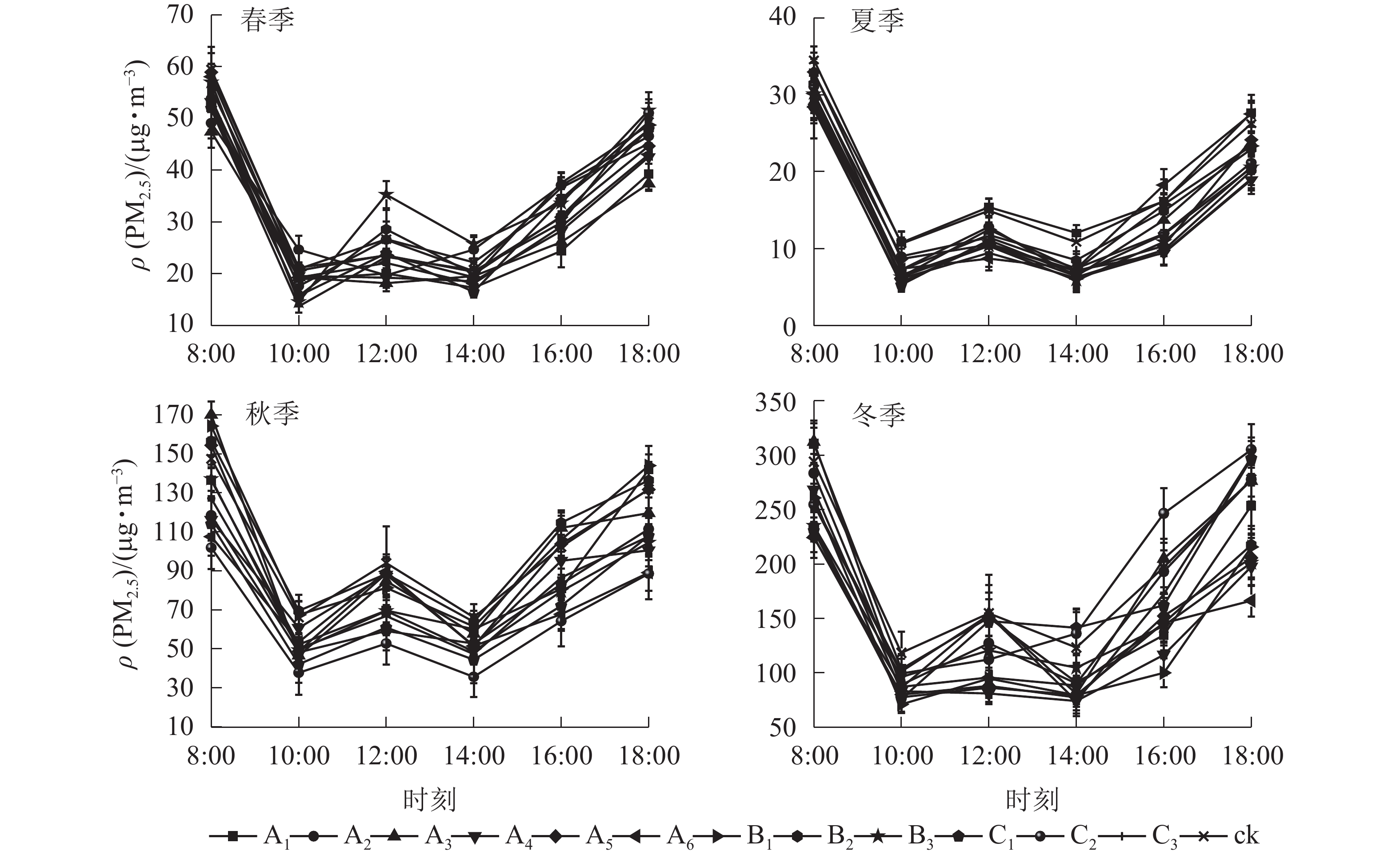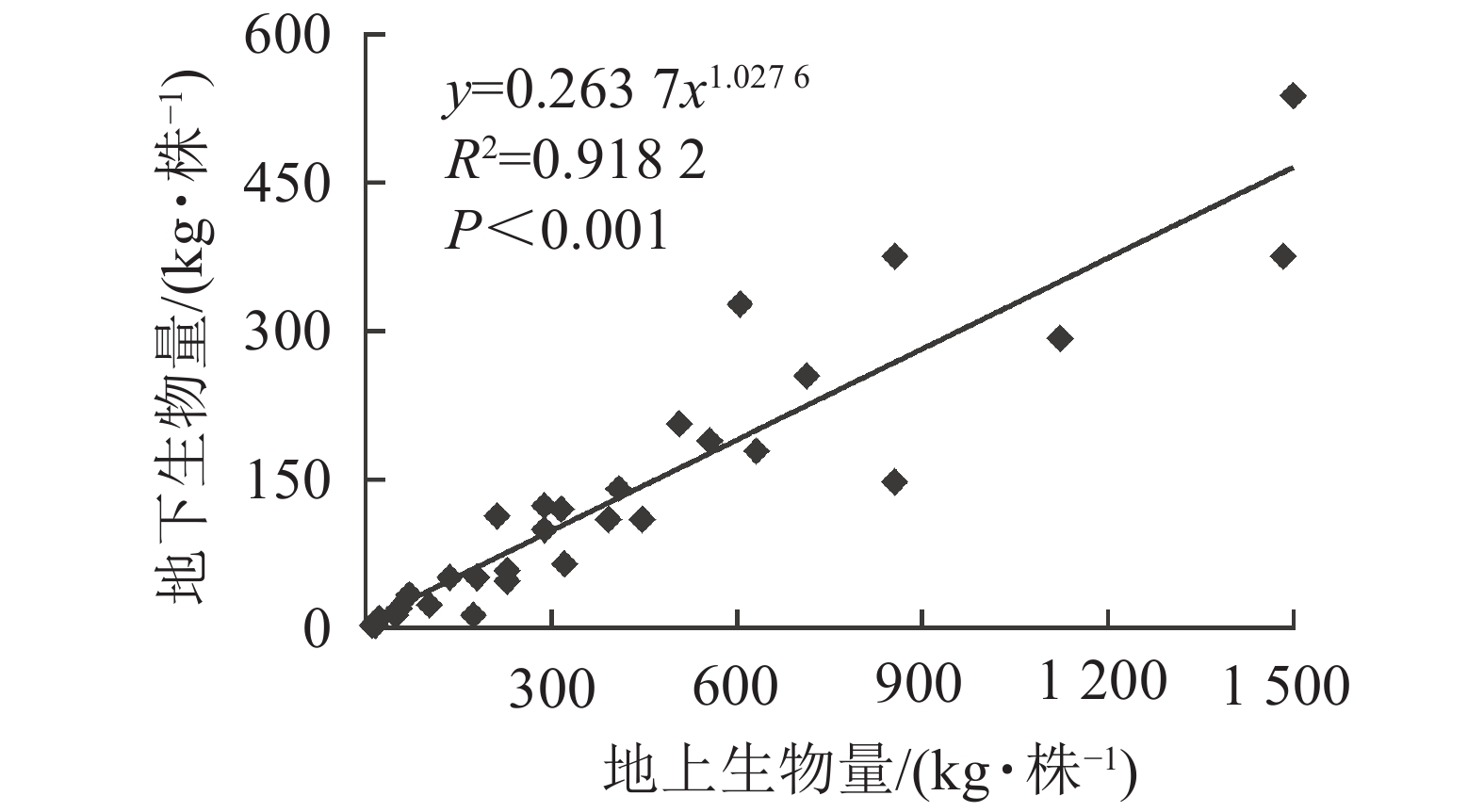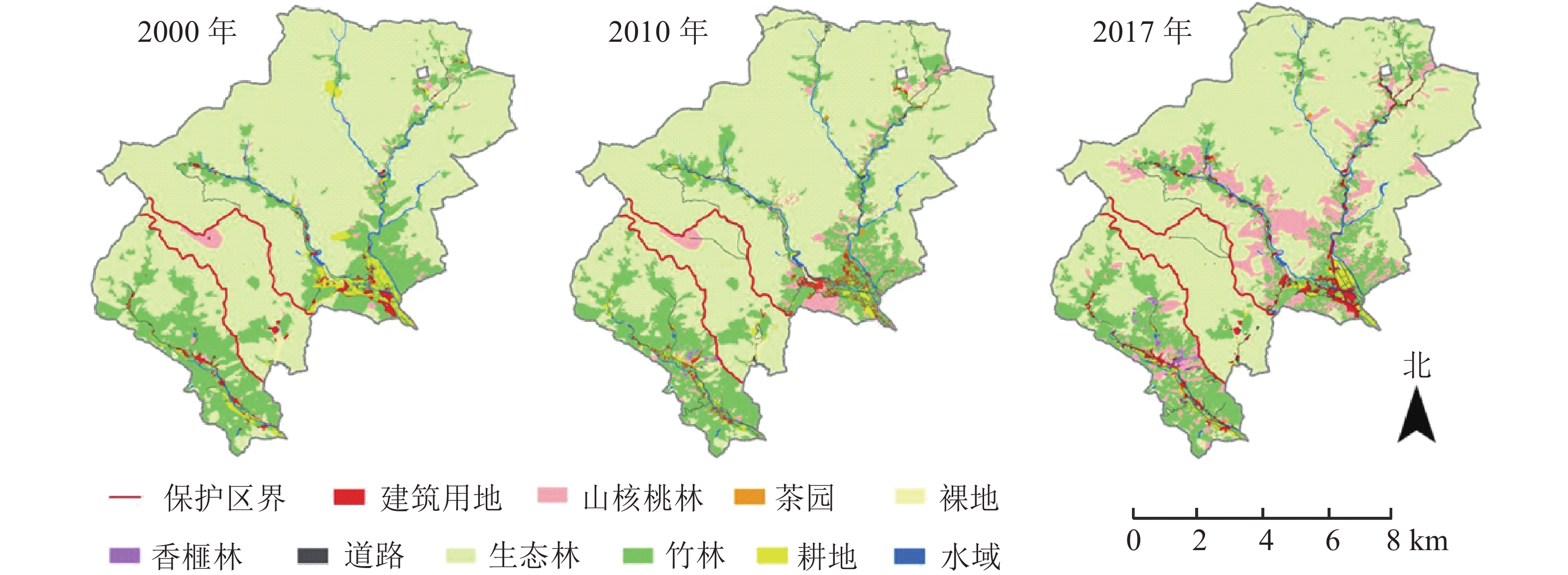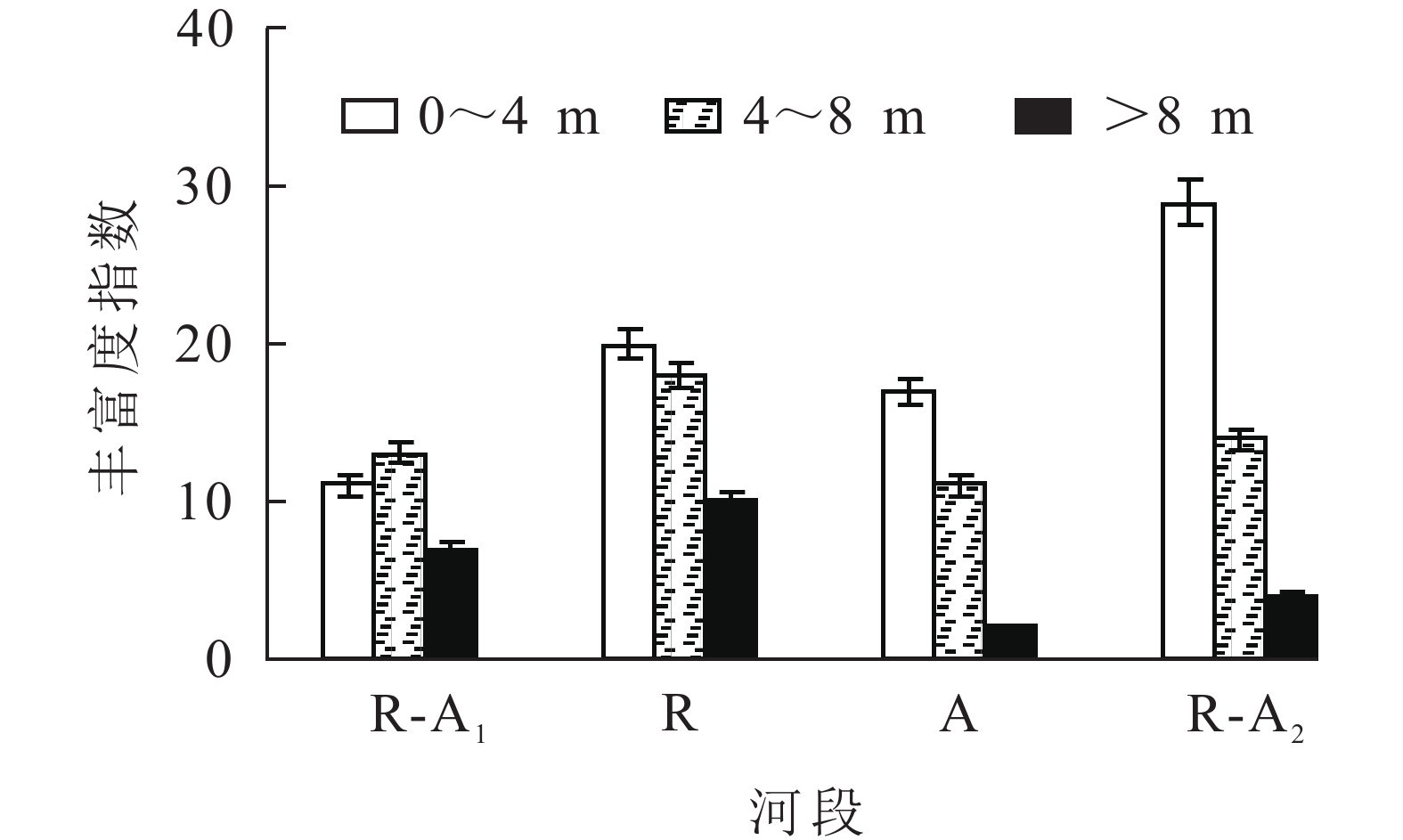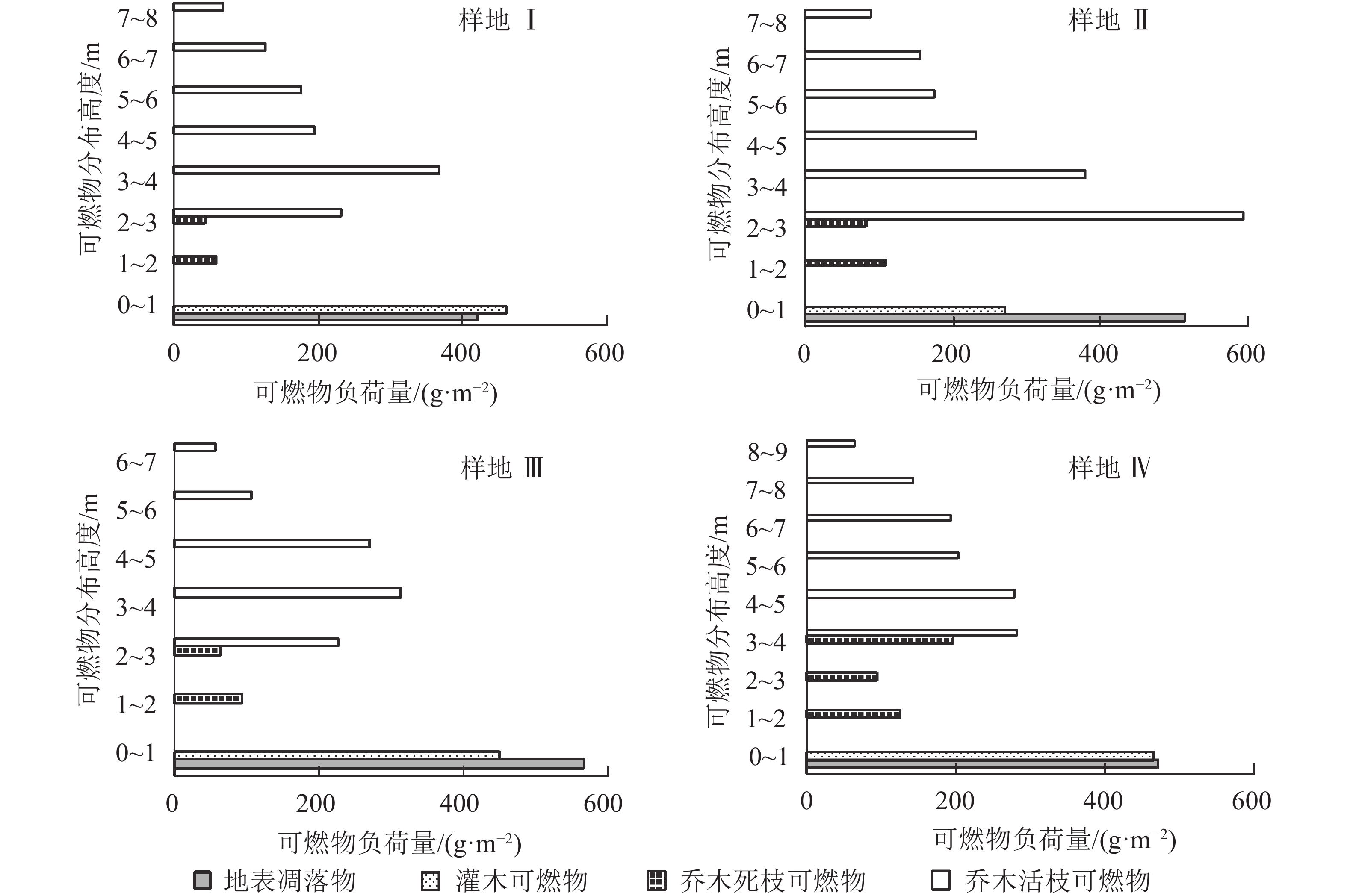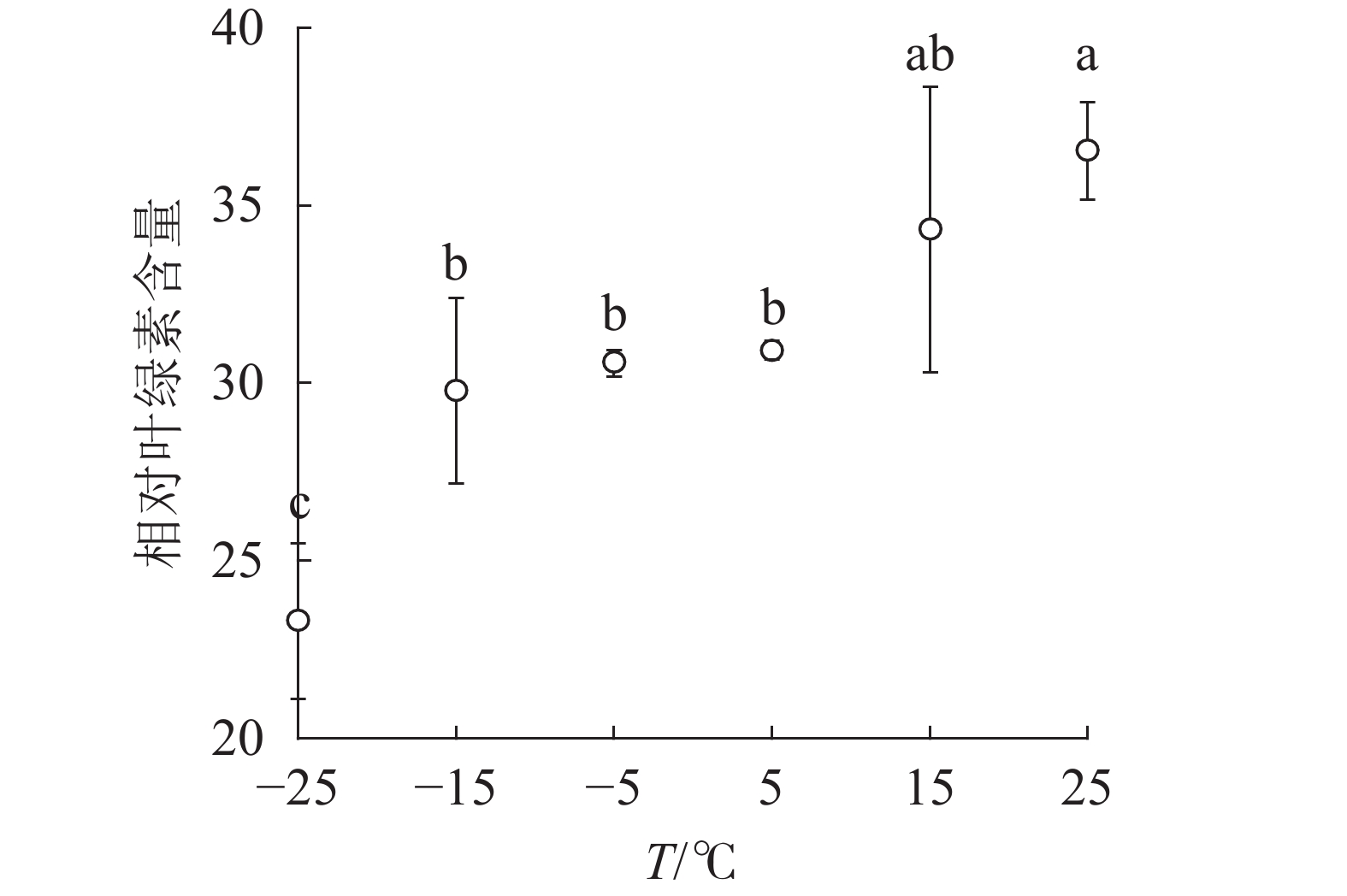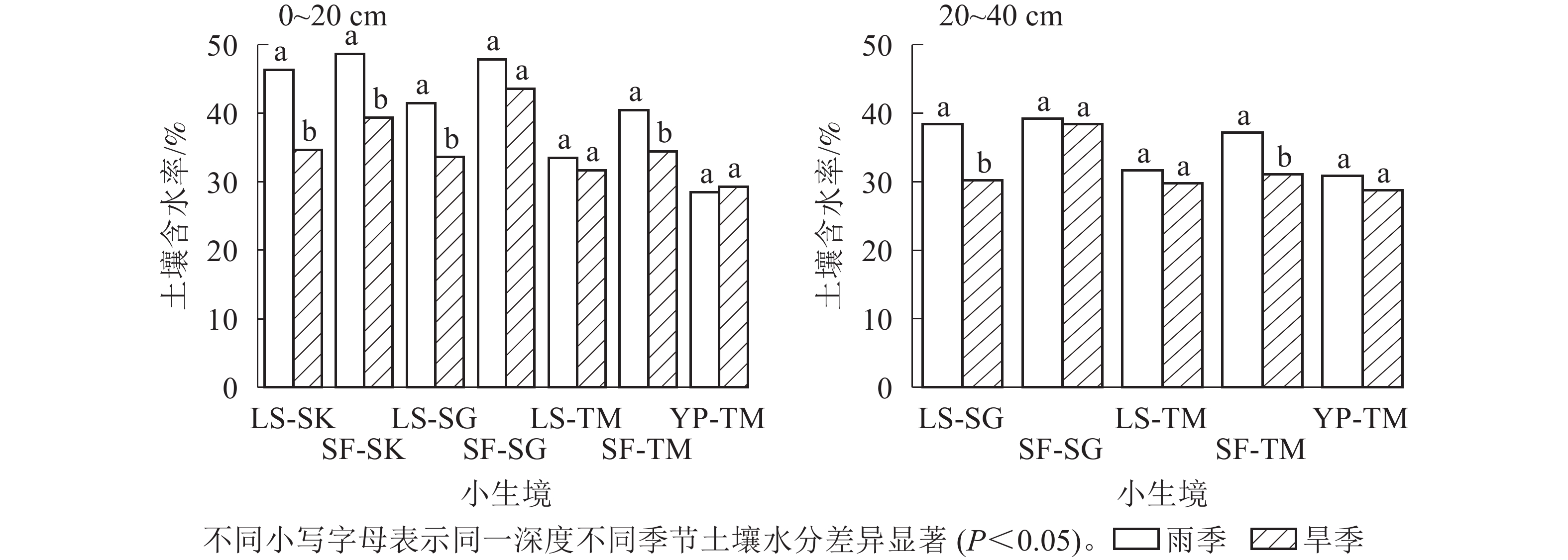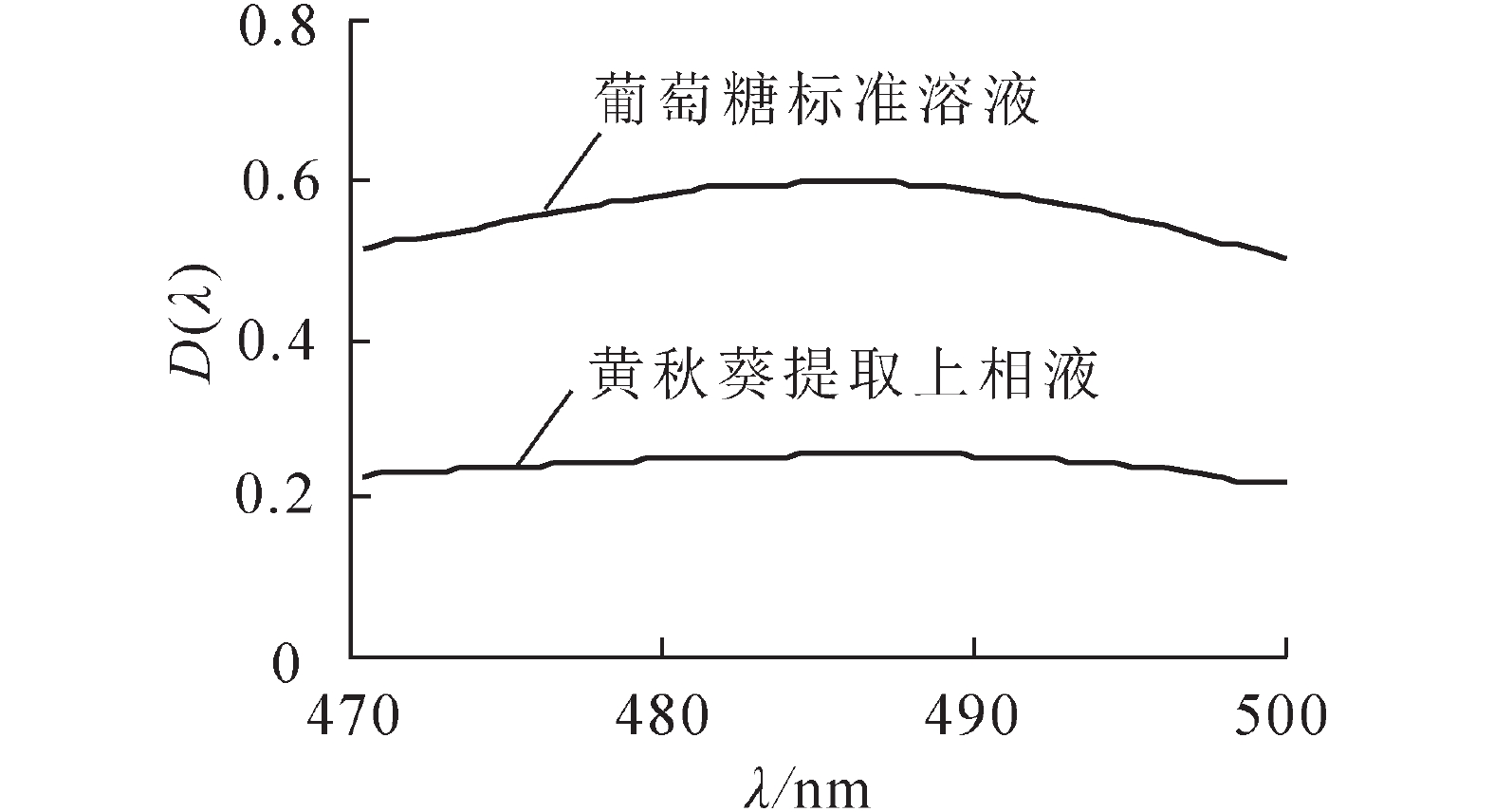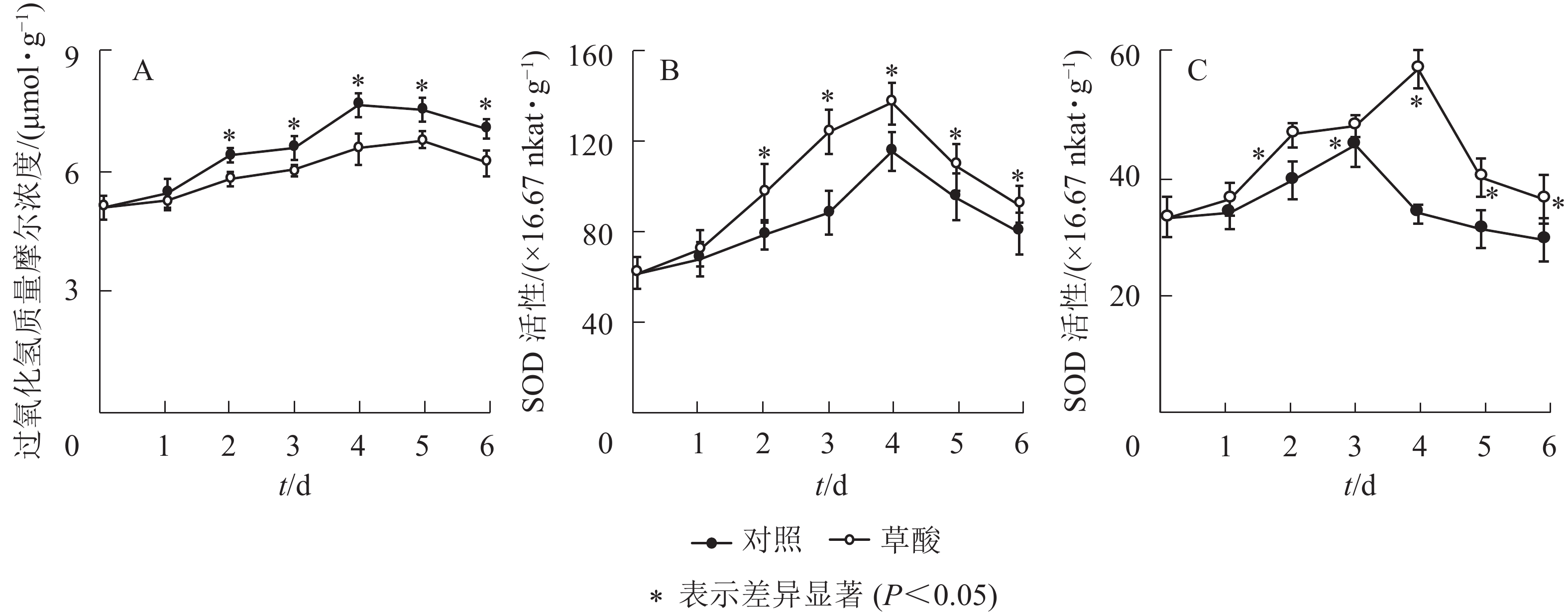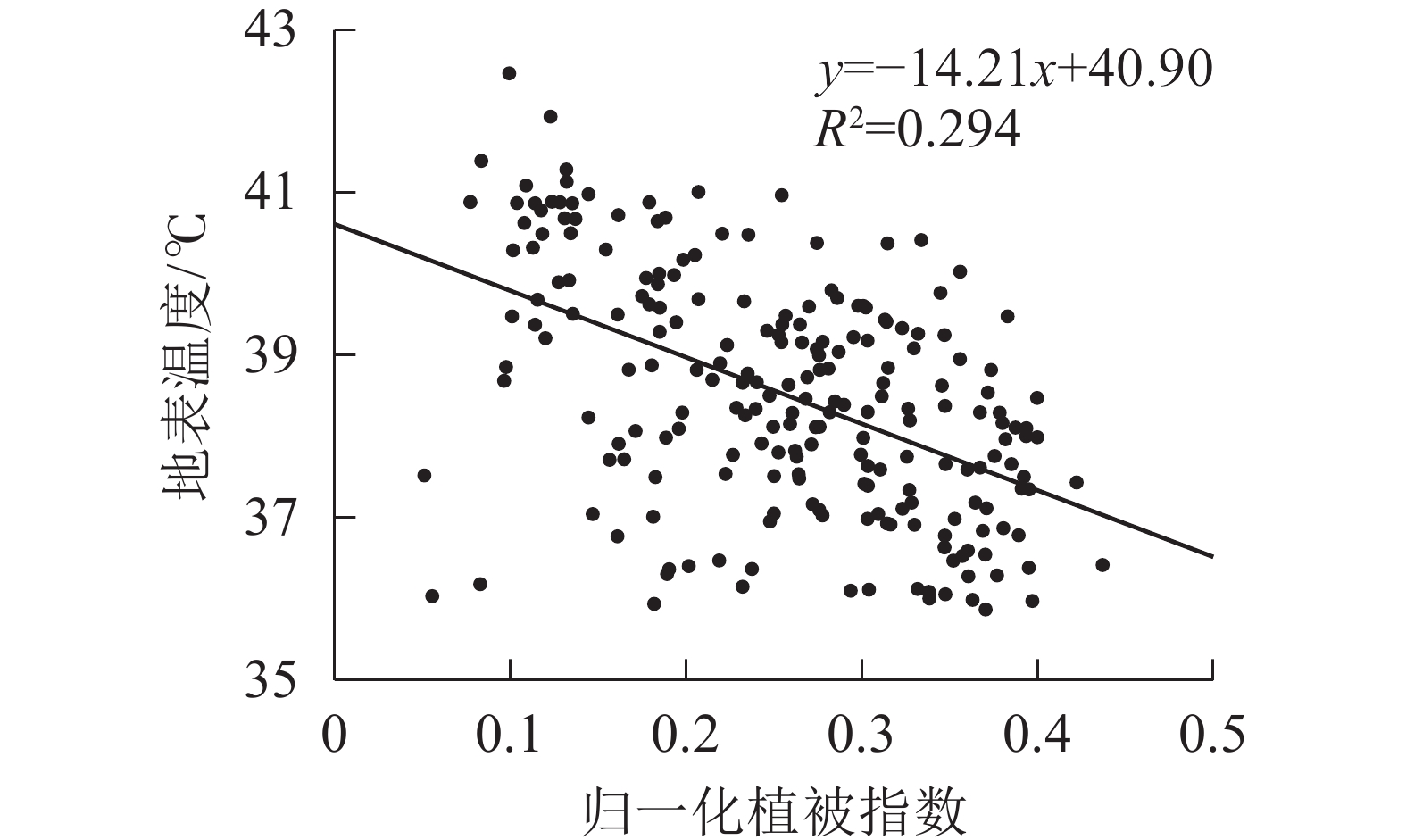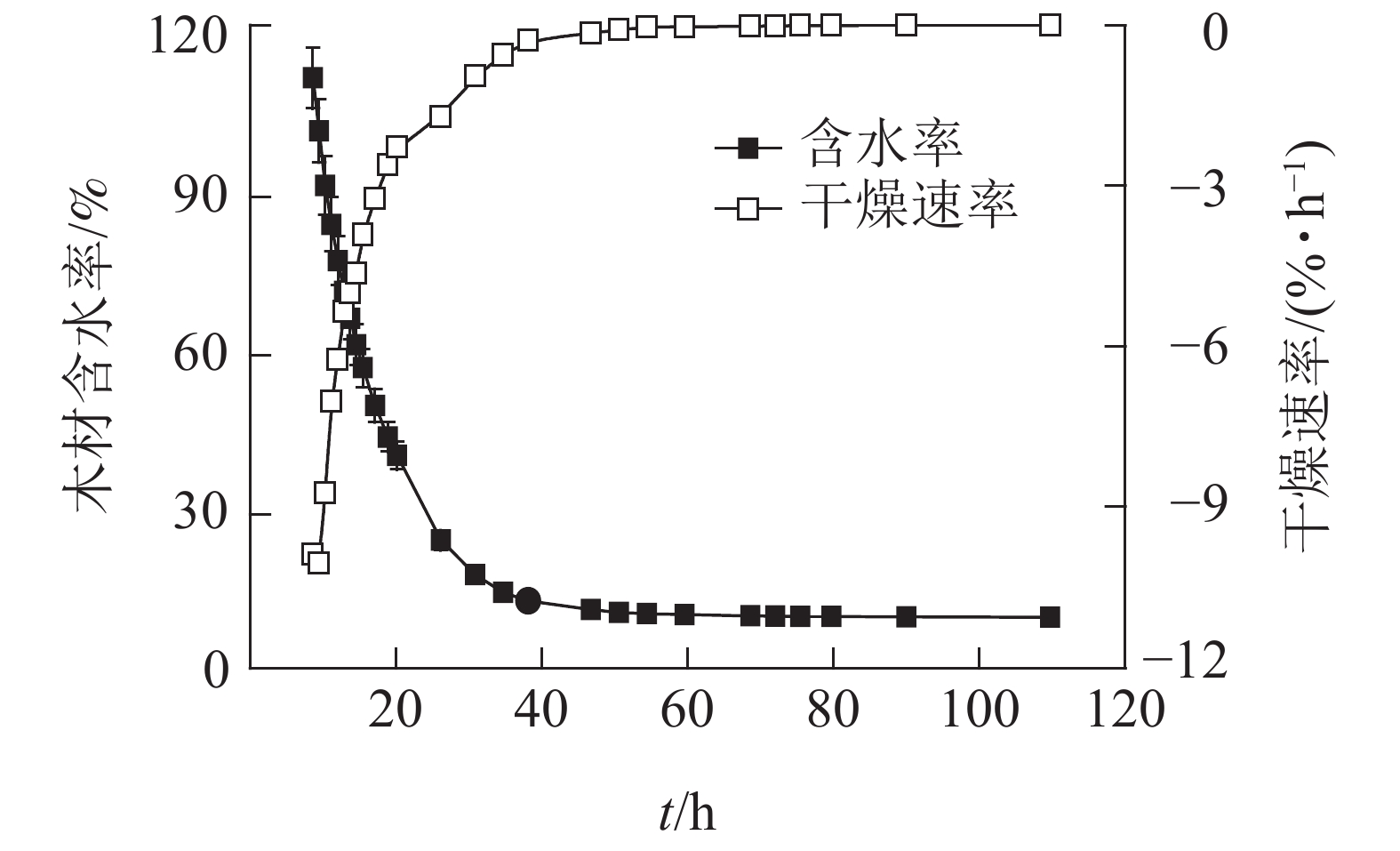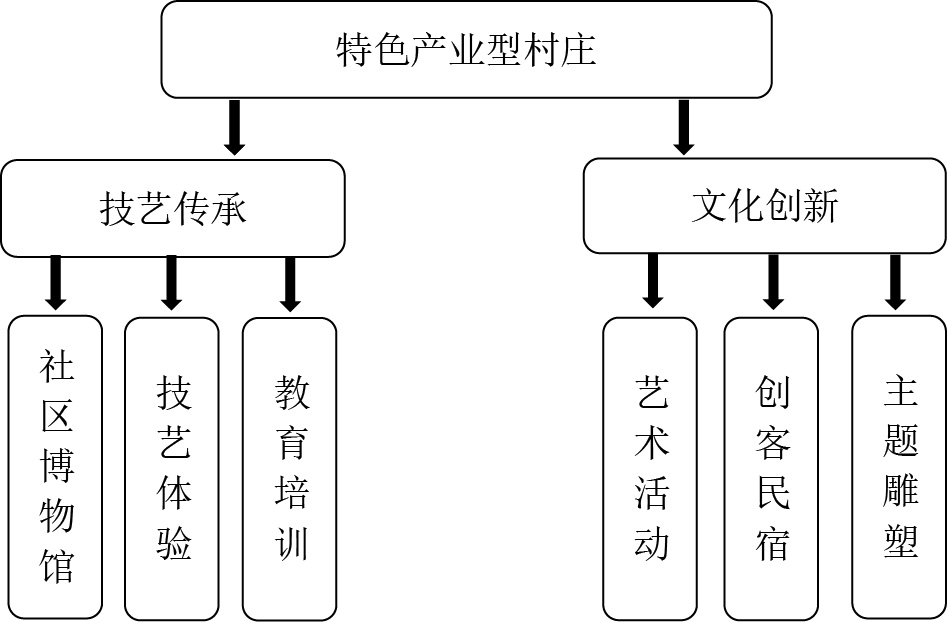2020 Vol. 37, No. 3
column
2020, 37(3): 397-406.
doi: 10.11833/j.issn.2095-0756.20190335
Abstract:
Objective The present study is to analyze the dynamic change patterns of fine particulate matter (PM2.5) and the blocking effects of urban road forests, and further explore which type of forest belt has the optimal dust and haze control effects. Method Three types of urban road forests with a total of 12 configurations were selected. Firstly, the daily dynamics, interannual dynamics and horizontal spatial variations of PM2.5 in and out of the forest belt were analyzed. Then, the dust reduction rate was used to evaluate the blocking effect of different forest belts on PM2.5. Finally, the Pearson correlation analysis was carried out between the dust reduction rate and microclimate factors to explore the possible factors affecting the dust reduction rate of vegetation. Result The results showed that concentrations of PM2.5 in roadside forests were highest around 8:00 and 18:00 and lowest at 10:00 and 14:00. The annual dynamic pattern indicated the most obvious change in winter (136.74−194.18 μg·m−3), followed by autumn (63.48−104.96 μg·m−3), spring (28.68−36.31 μg·m−3), and summer (13.30−19.13 μg·m−3). The variation of PM2.5 in the horizontal space of the forest belt varies with seasons. In the spring and summer, PM2.5 gradually decreased from the edge of the forest to the interior of the forest, while in the autumn and winter, the dust margin increased at 25 m in the forest, but decreased at 25−30 m and was lower than the outer edge of the forest. The blocking rate of PM2.5 was highest in arbor-shrub-grass structure, followed by mixed conifer and broadleaved forest structure, and lowest in uniform arbor type. In spring and summer, the blocking rate of 12 kinds of roadside forests on PM2.5 was positive, while in autumn and winter only A5 (mixed conifer and broadleaved forest), B1, B2, and B3 (uniform arbor type) and C2 and C3 (arbor-shrub-grass structure) were positive, and the rest were negative. There were seasonal differences between microclimate factors and PM2.5. PM2.5 concentration was negatively correlated with wind speed in spring, autumn and winter, but positively correlated with relative humidity in autumn and winter, as well as temperature in spring and summer. The block rate of PM2.5 in roadside forests showed a significant positive correlation with temperature in autumn and relative humidity in autumn and winter, but had no significant correlation with other microclimate factors. Conclusion The belt width, the proportion of evergreen coniferous trees and shrubs of urban roadside forests should be reasonably increased to reduce PM2.5 and improve air quality. [Ch, 5 fig. 6 tab. 32 ref.]
2020, 37(3): 407-415.
doi: 10.11833/j.issn.2095-0756.20190382
Abstract:
Objective Taking the over-cutting forest in Daxingan mountains as the research object, this study aims to define space utilization of forest, propose the calculation method for space utilization ratio and analyze space utilization law of natural stands from three aspects: horizontal space, vertical space and comprehensive space utilization of stands. Method Using the data of 14 sample plots, correlation analysis and stepwise regression analysis were applied to reveal the main factors influencing space utilization ratio of forest stands to provide theoretical basis for the structure optimization of natural stand, its tending and management. Result (1) The utilization ratios of horizontal space, vertical space and comprehensive space in 14 plots were 62.5%−85.9%, 31.2%−65.5% and 50.1%−68.7%, respectively. The average levels were 73.6%, 46.0% and 59.2%, respectively. (2) With the growth of forest stands, the tree number, individual size and distribution pattern were constantly adjusted, and utilization ratio of horizontal space also changed. The horizontal space utilization ratio of stands was significantly positively correlated with tree number, renewal density as well as tree clustering coefficient (P<0.01), negatively correlated with stand stock (P<0.05) and stand mean breast-height diameter (P<0.01). (3) The vertical space size of stands at different growth stages varied. When stand growth, stand height, tree number and height of each layer were adjusted gradually, the vertical space size and space utilization ratio of forest stands changed dynamically. The utilization ratio of vertical space of stands had extremely significant positive correlation with height of renewal layer (P<0.01), significant negative correlation with tree number, renewal density and forest accumulation coefficient (P<0.05), and extremely significant negative correlation with the number of vertical layer, height of main forest, height of succession, height difference between main forest and renewal layer, height difference between succession layer and renewal layer, and number of plants in renewal layer (P<0.01). (4) The comprehensive space utilization ratio of stands was affected by both horizontal and vertical structure factors, which had significant positive correlation with stand density and plant number of main forest layer (P<0.05), significant negative correlation with vertical layer number and succession height (P<0.05), and extremely significant negative correlation with height of main forest layer, height difference between main forest layer and renewal layer (P<0.01). Conclusion Space size and space utilization ratio change dynamically with the growth of forest stands. The main factors affecting utilization of horizontal space, vertical space, and comprehensive space of stands include renewal density, height difference between succession layer and renewal layer, main forest height, stand density and succession height. To improve the utilization ratio of stand space and optimize stand structure, it is necessary to take three-dimensional technical measures that take into account such factors as horizontal and vertical structures. It’s also important to reasonably regulate and control the forest stand density in different growth stages, ensure natural renewal capability of forest stands, and reasonably set the tree number and height distribution at all levels of stands to form a stepped distribution state and make full use of stand space. [Ch, 6 tab. 22 ref.]
2020, 37(3): 416-423.
doi: 10.11833/j.issn.2095-0756.20190384
Abstract:
Objective A proper understanding of the above-ground and underground biomass allocation and carbon storage of Picea schrenkiana, an important tree species in Xinjiang mountainous areas of great significance to the forest resources investigations in Xinjiang. To establish the allometric growth models of trunk, branch, leaf, root, the above-ground part and the whole plant with DBH(D), tree height (H) and DBH-H (D2H, D3/H and DbHc). Method Analysis of the of above-ground and underground biomass distribution pattern of 30 P. schrenkiana trees by whole plant harvesting method. Result There were significant differences in the biomass of trunk, branch, leaf and root of P. schrenkiana (P<0.01). The biomass of whole P. schrenkiana trees ranged from 12.04−2 014.34 kg·plant−1, and the biomass of the above-ground part and the underground part were 10.16−1 475.17 and 1.88−539.18 kg·plant−1 respectively. The biomass of trunk, branch, leaf and root accounted for 56.86%, 13.03%, 5.96% and 24.15% of the whole plant, and the range of root-shoot ratio was 0.08−0.55. At the plant level, the biomass model of each organ based on DBH(D) and tree height(H) variables was established. The optimal biomass model of root biomass was W=a(D2H)b, and other organs was W=aDbHc. Slope position, slope, altitude and soil thickness are the main environmental factors affecting the biomass of spruce. Conclusion The allometric growth model based on tree height-DBH can better fit the biomass of each organ of P. schrenkiana, and can effectively estimate its biomass and carbon reserves. [Ch, 4 fig. 3 tab. 30 ref.]
2020, 37(3): 424-431.
doi: 10.11833/j.issn.2095-0756.20190461
Abstract:
Objective With the employment of nonlinear quantile regression method using dummy variables, the current study is aimed to establish a prediction model for the relationship between height and diameter at breast height (DBH) in Larix principis-rupprechtii and Betula platyphylla mixed forest so as to better predict the tree structure and site productivity of mixed forests. Method Taking L. principis-rupprechtii and B. platyphylla mixed forest of Saihanba Mechanised Tree farm in Hebei Province as the research object, with 83 pieces of standard land survey data used and dummy variables created, this paper adopted the least square method and nonlinear quantile regression method respectively in the construction of the relationship model of tree height and DBH of different species. Result The accuracy of the nonlinear quantile regression prediction model based on dummy variables was higher than that of the one constructed using the least square method. Specifically, when the least square method was used to fit the tree height and DBH relationship model of different tree species, the determination coefficient, average difference and average absolute error of different tree species models were within the range of 0.787−0.814, 1.581−1.877 and 2.447−2.654 respectively. When the nonlinear quantile regression method was used, the coefficient, average deviation, and average absolute error were within the range of 0.839−0.921, 0.213−1.469, 0.561−2.322. In accordance with the residual analysis, when the quantiles of τ is 0.7, the relationship model of tree height and DBH of different species demonstrated a higher accuracy. Conclusion To sum up, compared with the one constructed employing the least square method, the prediction model of tree height and DBH relationship of different tree species adopting the nonlinear quantile regression method has higher prediction accuracy. [Ch, 3 fig. 3 tab. 33 ref.]
2020, 37(3): 432-438.
doi: 10.11833/j.issn.2095-0756.20190448
Abstract:
Objective The aim is to conduct a scientific assessment of the coordinated development between environmental construction and social service in wetland parks and the overall quality of wetland parks. Method Based on the clarification of the quality connotation of wetland parks, this paper, taking Shajiabang National Wetland Park as the research object and applies analytic hierarchy analysis. The quality evaluation indes system of wetland parks is established from the perspective of environmental factors and social services, and the construction of a quality evaluation model as well as a grade classification of wetland parks with the theory of coordinated development degree was introduced. Result There has been a significant promotion of the quality grade of Shajiabang National Wetland Park from 2009 to 2018 with arise from Level 1 to Level 4. The coordinated development between environmental construction and social services has been constantly facilitated with the coordinated development index rising from 0.143 to 0.665. Environmental factors such as water quality, invasion of alien species, plant species and bird species affect the quality of wetland parks to a great extent while service factors such as the number of popular science education courses and that of the ecological lecturers are positively correlated to the quality improvementof the wetland parks. Conclusion With a higher growth rate than the environmental quality index, the service quality index of wetland parks exerts larger impact on the quality of wetland parks. Therefore, it is advisable that efforts should be focused on the improvement of social service functions so as to effectively promote the overall quality of wetland parks. [Ch, 1 fig. 4 tab. 17 ref.]
2020, 37(3): 439-446.
doi: 10.11833/j.issn.2095-0756.20190306
Abstract:
Objective This research studied the characteristics and driving forces of landscape pattern change in southern collective forest area to provide scientific basis for sustainable forest management. Method Landscape pattern change characteristics of state-owned forest in Zhejiang Tianmu Mount nature reserve and collective forest in surrounding community of the reserve in 2000, 2010 and 2017 were compared and studied by using landscape type area transfer matrix and landscape pattern index analysis method. Result Ecological forest was the dominant landscape in the reserve and communities. The area of ecological forest increased in the reserve and decreased in the communities, while the area of economic forest changed in an opposite way. The bamboo forest and hickory forest transformed to ecological forest in the reserve, while ecological forest transformed to economic forest, buildings and roads, then mutual transformation between different kinds of economic forest or mutual transformation between economic forest and cultivated land in the communities. The landscape pattern in the reserve changed little, but landscape fragmentation, heterogeneity and uniformity in the communities increased year by year, and the ascendancy of ecological forest had been on the decline. Policy factors, market demand changes and roads were the main driving forces behind the changes of forest landscape patterns. Conclusion Changes of landscape patterns in community may affect ecological and cultural functions of forest. Measures, such as policy making, tourism development and road construction can be taken. [Ch, 1 fig. 8 tab. 17 ref.]
2020, 37(3): 447-455.
doi: 10.11833/j.issn.2095-0756.20190396
Abstract:
Objective With an attempt at the clarification of the dominant species and structural characteristics of landscape-recreational forests in different ecological niches, the current paper is aimed to conclude the rules and research the existing problems of the construction of landscape-recreational forests. Method With the method of community ecology employed and 20 sample plots in Qiandeng Lake Park, 40 sample plots in Wenhua Park, and 20 sample plots in the Pingzhou Park selected as researching areas, the research was conducted with every tree surveyed using high-resolution remote sensing images. After the diameter classes, height classes and crown areas were clarified, an analysis was made of the differences among different types of landscapes. Result (1) Compared with Wenhua Park and Pingzhou Park, Qiandeng Lake Park enjoys a higher level of singleness in tress species with Khaya senegalensis as the dominant tree of large diameter, height, and canopy class; (2) Landscape-recreational forests on closed forest land and besides the buildings are mainly composed of medium-diameter trees while those on in the open forest land and besides the water are mainly composed of small diameter trees with larger diameter trees taking up a small percentage; (3) Landscape-recreational forests in the closed forest land and besides the buildings are mainly composed of the medium-height trees while, those in the open forest land and besides the water are mainly composed of small height trees, with large height trees taking up a small percentage; (4) Landscape-recreational forests are mainly composed of the medium canopy class trees with, the large canopy trees taking up only a small percentage. Conclusion To sum up, floristic characteristics of tropical or subtropical monsoon are all shown in the landscape-recreational forests of the three parks. There are differences in the distribution of diameter classes among the trees in the closed forest land and open forest land (the center forest land) as well as those besides the water and buildings (fringe forest land). The differences in the distribution of height class are gradually decreased with the location of landscape-recreational forests shifted from the downtown to subsidiary center and finally to the suburbs. It is necessary to conduct long-term dynamic canopy monitoring to reflect the trend of canopy distribution. [Ch, 3 fig. 4 tab. 20 ref.]
2020, 37(3): 456-464.
doi: 10.11833/j.issn.2095-0756.20190391
Abstract:
Objective This study aims to analyze the horizontal and vertical distribution characteristics of plants diversity in typical riverside rural settlement zones along the Nansha river of Guangzhou, and explore the variation law of plant diversity with the change of the river sections and residential activities. Method The basic data were obtained by field survey, satellite image interpretation and mathematical statistics. Result A total of 77 species of 70 genera and 44 families were recorded, including 42 species of trees, 19 species of shrubs, 13 species of herbs and 3 species of vines, among which Rosaceae and Palmae had the most species, followed by Moraceae and Rutaceae. There were no significant differences in dominant plant species in different river sections. The dominant trees were Dimocarpus longan, Ficus microphylla and Clausena lansium, while the main shrubs were Osmanthus fragrans, Murraya exotica and Aglaia odorata, and the main herbs were Musa nana and Bambusa textilis. In different reaches from the west gate to the east gate in the study area, tree diversity showed a downward trend as a whole, while no obvious trend was found in shrubs, herbs and overall evenness. However, the diversity and evenness index of trees, shrubs and herbs in the residential section were significantly higher than those in other sections, while the indices in the agricultural section were lower than those in other sections. The river width was significantly correlated with herb diversity, and building coverage was significantly correlated with shrub evenness. Vegetation in the study area was vertically distributed and divided into upper, middle and lower layers with 4 m and 8 m as boundaries. The dominant tree species in different height layers were different. M. nana, B. textilis and D. longan were dominant in the lower layer. D. longan, C. lansium, Taxodium distichum Conclusion Human activities have little impact on large trees, but significant impact on small flexible plants such as potted shrubs and herbs. [Ch, 4 fig. 2 tab. 29 ref.]
2020, 37(3): 465-471.
doi: 10.11833/j.issn.2095-0756.20190436
Abstract:
Objective Wetland is a precious natural resource and an important ecosystem with irreplaceable functions. The wetlands in Changxing County play an important role in Zhejiang Province. A survey of the diversity of vascular plants in wetlands was carried out to provide scientific basis for the restoration and protection of wetland ecosystem in Changxing County. Method The diversity of vascular plants and the flora in wetlands were studied by route survey and quadrat survey. Result (1) There were 464 species of vascular plants, belonging to 277 genera 95 families. Among them, there were 7 species of ferns in 7 genera of 7 families, 4 species of gymnosperms in 3 genera of 2 families, and 453 species of angiosperms in 267 genera of 86 families which included 393 species of dicotyledons in 222 genera of 68 families and 60 species of monocotyledons in 45 genera of 18 families. (2) Families of 2−9 species and 1 species were dominant in the composition of plant families, accounting for 88.42%. Genera consisting of 2−5 species and 1 species were dominant, accounting for 97.11%. (3) Aquatic plants accounted for 82.54% of the total species of wetland plants, and herbaceous plants accounted for 85.86%. (4) There were 11 distribution types of family, dominated by pan-tropic family and north temperate distribution family, in addition to world-wide distribution. There were 12 distribution types of genus, dominated by north temperate distribution genus, and the number ratio of tropical genus to temperate genus was 0.77. Conclusion The vascular plants in Changxing County are abundant, and the flora shows typical temperate and transitional characteristics. [Ch, 7 tab. 25 ref.]
2020, 37(3): 472-479.
doi: 10.11833/j.issn.2095-0756.20190343
Abstract:
Objective Based on the fuel distribution characteristics of the Platycladus orientalis forest in Western Hills of Beijing, fuel regulation measures of different intensities were implemented, and effects of the fuel regulation measures were evaluated according to the biodiversity and photosynthetic characteristics of understory vegetation. Method P. orientalis, a typical coniferous tree species in North China was selected as the research object. By investigating and analyzing distribution characteristics of P. orientalis forest fuel, regulation measures focusing on pruning, cutting and irrigation were formulated, including: unregulated stands (ck), pruning height 2.5 m and cleaning the surface litter appropriately (P1), pruning height 3.0 m and cutting shrubs and cleaning the surface litter appropriately (P2), pruning height 3.5 m and cutting shrubs and cleaning the surface litter appropriately (P3). Three sample plots of 20 m×20 m were established for each treatment, and changes of plant diversity and photosynthesis attributes of dominant shrubs were compared between regulated and unregulated stands. Result The biodiversity of understory vegetation was altered after different fuel managements, among which the species dominance (D) and diversity (H) of shrub layer and grass layer and the species evenness (J) of shrub layer after P2 management were significantly higher than those of ck. Compared with ck, the maximum net photosynthetic rate, light saturation point, light compensation point, dark respiration rate of the understory vegetation (Grewia biloba var. parviflora and Broussonetia papyrifera) all increased, while the apparent quantum efficiency decresed after P2 management. We observed that the accumulation of understory vegetation photosynthetic products was more obvious with P2 management. Conclusion The implementation of regulation measures changed the forest structure and increased the light intensity. The effects of different regulation intensity on biodiversity and photosynthetic characteristics of understory vegetation were different. P2 management was most conducive to stand recovery in the study area. [Ch, 2 fig. 4 tab. 26 ref.]
2020, 37(3): 480-488.
doi: 10.11833/j.issn.2095-0756.2020.20190485
Abstract:
Objective To restore and better protect the naturalness of Yongding River, one of the five major rivers in Haihe River Basin, the current study is aimed at the naturalness evaluation of it based on the close-to-nature concept, which is of grate significance of the drinking water safety of residents in Beijing and the water environment of Haihe River Basin. Method Taking the Beijing gorge section of Yongding River as the study subject, the evaluation index system of river naturalness was constructed with 25 qualitative and quantitative indexes selected from five aspects, namely, hydrological elements, cross-sectional configuration, physical and chemical properties of water body, riparian zone conditions and social ecological value of river. Then, the weight of each index in the evaluation system was calculated with the weighting method of analytic hierarchy process intergrated with the entropy weight method before the naturalness of the river is evaluated and the natural grade is determined employing the fuzzy comprehensive evaluation method and the grey correlation analysis respectively. Result The naturalness of the river evaluated employing fuzzy comprehensive evaluation method is generally consistent with that using the grey correlation analysis, and among the 21 river segments, the natural, near-natural, degraded and artificial river segments accounted for 14.29%, 28.57%, 46.62% and 9.52% of the total river length, respectively, and the length is about 7.5, 15.0, 25.0 and 5.0 km. Conclusion In general, most of the investigated river segments are being degraded, but they all still display potential in restoring the naturalness and the fuzzy comprehensive evaluation method and grey correlation analysis are both feasible methods for river naturalness evaluation. [Ch, 3 tab. 27 ref.]
Effects of shading and fertilization on growth and nitrogen accumulation of Phoebe zhennan seedlings
2020, 37(3): 489-495.
doi: 10.11833/j.issn.2095-0756.20190399
Abstract:
Objective This study aims to reveal the effects of shading and fertilization on growth and nitrogen accumulation of Phoebe zhennan seedlings to provide scientific basis for the growth control of this plant. Method The two-split-plot test design was used to analyze the effects of shading, fertilization, and interaction of shading and fertilization on the growth, biomass accumulation and nitrogen accumulation of the 1-year-old P. zhennan seedlings. The main plot contained three different shading levels: natural light (A1, 0% of shading rate), one-layer shading (A2, 54.5% of shading rate), and two-layer shading (A3, 85.3% of shading rate). Each main plot contained three different sub-plots with three different fertilization levels: no fertilization (B1), mild fertilization (B2, 3.3 g compound fertilizer per plant), and moderate fertilization (B3, 6.7 g compound fertilizer per plant). A total of 9 treatments were included in this study. Result The growth and nitrogen accumulation were significantly influenced by shading, fertilization, and their interaction (P<0.05). The seedling height, basal diameter, and biomass accumulation under A2B2 treatment were 77.2%, 30.3% and 62.1% higher than those under other treatments, respectively. Furthermore, the nitrogen accumulation reached the maximum under A2B2 treatment, 68.3% higher than that of other treatments. However, the nitrogen content was highest under A3B3 treatment, and was significantly higher than that under other treatments (P<0.05). Conclusion Moderate shading and fertilization can increase the nitrogen accumulation, and promote the photosynthesis, growth and biomass accumulation of P. zhennan, but excessive shading and fertilization can inhibit its growth to some extent. [Ch, 3 fig. 4 tab. 22 ref.]
2020, 37(3): 496-505.
doi: 10.11833/j.issn.2095-0756.20190370
Abstract:
Objective To provide a scientific basis for seedling breeding and population protection, the effects of shading treatment on the growth and physiological functions of Cercidiphyllum japonicum seedlings were analyzed. Method With single factor random block design was adopted, using a LI-6400 portable photosynthetic system, a series of shading experiments were conducted on C. japonicum seedlings to study the effects of light on physiological characteristics, diurnal variation of net photosynthetic rate (Pn), stomatal conductance (Gs), transpiration rate (Tr), and intercellular CO2 concentration (Ci) with seedlings being measured in summer under four light treatments: full light (L0), 55% transmittance (L1), 25% transmittance (L2), and 10% transmittance (L3). At the same time, changes in growth, in morphological indexes, and in the ultrastructure of leaf mesophyll cells were observed by sampling and transmission electron microscope technique. Result (1) Shading affected the leaf water content (LWC) and morphology compared to the control; with an increase in shading intensity, LWC increased (P<0.05), single leaf area (SLA) increased (P<0.05) too, both single leaf dry weight (SLWd) and lamina mass per unit area (LMA) decreased (P<0.05), and lamina area per unit mass (LAM) increased (P<0.05). (2) Shading had a strong effect on photosynthesis of seedlings. The “noon break” did not appear during the course of the day. The peak value appeared at 14:00, and other treatments were relatively mild with the peak value appearing at 12:00. The variation curve for Gs was similar to Pn, and Ci basically showed a concave change. The daily average for Pn, Gs, and Tr were L0>L1>L2>L3, but the order of Ci was reversed. (3) Chlorophyll and carotenoid content in leaves increased significantly with shading condition (P<0.05), and both chlorophyll and carotenoid content increased progressively with an increase of shading intensity (P<0.05). Long-term shading improved the light capture ability of leaves. (4) With full light: the outline of cells in the mesophyll tissue could be identified, the number of chloroplasts was small, the arrangement of chloroplasts was close to parallel to the cell wall, there was a large cavity in the center of the cells, the arrangement of thylakoid body was uniform, and the starch granules and osmium granules were few. With shading, the number of chloroplasts increased, the proportion of chloroplasts in the whole cell increased, the shape of chloroplasts gradually became spherical or oval, the number of starch grains increased, and the thickness of thylakoid lamellar was so. (5) For intensity shading L2 and L3, height (H) and basal diameter (D) decreased (P<0.05), the biomass model D2H decreased significantly (P<0.05), and normal growth and development of seedlings affected. However, there were no significant differences between growth indexes of seedlings for L1 (mild shade) compared to L0 (P>0.05). Thus, intensity shading has a great effect on the growth of seedlings. Conclusion The mild shading possibly beneficial for the growth environment of forests and having no obvious inhibitory effect on seedling growth, but the effective radiation intensity should be more than 55% of natural light intensity. [Ch, 3 fig. 4 tab. 29 ref.]
2020, 37(3): 506-513.
doi: 10.11833/j.issn.2095-0756.20190366
Abstract:
Objective Nothofagus antarctica PSⅡ photochemical performance under low temperature was assessed and its results were used in calculation integrated biomarker response (IBR) to assess the synthetical indicator of chlorophyll fluorescence under low temperature stress. Method The environment temperature of N. antarctica was changed gradually (from 25 ℃ to −25 ℃). After exposed, relative chlorophyll content (SPAD value) and fast chlorophyll fluorescence were measured and analysed, IBR were calculated, to assess the effect of low temperature PSⅡ photochemical activity. Result 15 ℃ hardly affects the PSⅡ photochemical activity. Oxygen-evolving complex and energy flow between PSⅡ units were disturbed under −5 ℃. Under the low temperature of −5, −15 and −25 ℃, SPAD value was remarkably reduced, and the PSⅡ donor side, electron transport of PSⅡ, energy flow between PSⅡunits were all disturbed seriously; heat dissipation was remarkably increased. IBR under different temperature treatments have a significant negative correlation with SPAD value and temperature. Conclusion The damage of PSⅡ photochemical activity by low temperature (below −5 ℃) was serious, and IBR can be used as a comprehensive parameter to evaluate the effect of low temperatures on PSⅡ photochemical activity and SPAD value. [Ch, 7 fig. 1 tab. 24 ref.]
2020, 37(3): 514-521.
doi: 10.11833/j.issn.2095-0756.20190259
Abstract:
Objective The purpose of this study is to determine the optimal exponential nitrogen (N) application amount for Phoebe bournei seedling cultivation, and to enrich fertilization measures for cultivation of high-quality P. bournei seedlings. Method Growth, physiology and nutrient status of P. bournei seedlings treated with 6 levels of exponential N rate ranging from 0 to 5 g per seedling were examined by pot experiment. Result Seedling height, ground diameter, leaf area, biomass, chlorophyll content and root activity increased first and then decreased with the increase of exponential N application, and reached maximum at 3 g per seedling. Accumulation of N, phosphorus (P) and potassium (K) was the highest in the treatment with the highest N application rate. The relationship between biomass, N concentration, N content and N supply demonstrated that the nutrient uptake of P. bournei was characterized by luxury consumption in the range of 3−5 g per seedling. Critical value method indicated that the critical range of the optimal mass fraction of N and K in leaves was 16.88−20.58 mg·g−1 and 9.78−11.38 mg·g−1 respectively, and the optimal N application amount was 3−4 g per seedling. Conclusion Based on the growth, physiology and nutrient accumulation of seedlings, it is recommended that the application exponential N rate of 4 g per seedling should be adopted.[Ch, 3 fig. 4 tab. 34 ref.]
2020, 37(3): 522-530.
doi: 10.11833/j.issn.2095-0756.20190388
Abstract:
Objective Enzyme kinetics study is a crucial method to reveal nutrient transformation in soil. The purpose of this study is to investigate the effects of wetland reclamation on transformation and availability of soil phosphorus and provide theoretical basis for nutrient conversion efficiency and quality improvement of wetland. Method Eight kinds of soil with different natural covers or land use patterns were collected in Hung-tse Lake estuary (shoal, Phragmites communis, Populus and paddy field) and Chongming Dongtan wetlands (shoal, Spartina alterniflora, P. communis and wheat field), and the soil alkaline phosphatase (ALP) was taken as an example to study kinetic characteristics of enzymatic reaction. One-Way ANOVA was used to compare the difference of soil ALP dynamic parameters under different land uses, and the correlation between physical and chemical properties of soil and kinetic parameters was explored by using redundancy analysis. Result Vmax (maximum reaction rate) and Km (Michaelis constant) of ALP kinetic parameters increased by 13.0%−313.4% and 21.0%−50.8%, respectively in Hung-tse Lake wetland, no matter whether the shoal naturally evolved into P. communis, or the reclaimed P. communis wetland into Populus plantation or paddy field. However, the Vmax/Km (catalytic efficiency) decreased by 25.0% during natural succession and increased by 2.3 times after artificial reclamation. For Chongming Dongtan wetland, Vmax and Km increased by 7.0 times and 6.2 times, and Vmax/Km increased by 11.1% after the transformation of shoal into P. communis. Moreover, the Vmax, Km and Vmax/Km decreased by 54.8%, 47.0% and 13.3% respectively after the conversion of P. communis into wheat field. Redundancy analysis results indicated that the Vmax/Km was positively correlated with total nitrogen (Hung-tse Lake) and organic carbon (Chongming Dongtan). Conclusion The total ALP significantly increased when the shoal was transformed into P. communis wetland, but the affinity between enzyme and substrate decreased. The Vmax/Km of ALP was significantly influenced by land use type and management mode after artificial reclamation. Increasing soil total nitrogen and organic carbon is beneficial to improvement of ALP catalytic efficiency no matter whether the land type is natural cover or artificial reclamation. [Ch, 1 fig. 3 tab. 43 ref.]
2020, 37(3): 531-539.
doi: 10.11833/j.issn.2095-0756.20190383
Abstract:
Objective This study aims to analyze differences in soil moisture and influencing factors of karst microhabitats of the eastern Yunnan Plateau, so as to provide scientific basis for the restoration of karst ecosystems. Method We studied karst niches (stone ditch, stone pit, soil surface) with different vegetation types, including limestone shrub, Pistacia weinmannifolia secondary forest and Pinus yunnanensis artificial mature forest under the forest-lake basin of Puzhehei karst. Result (1) In each niche soil moisture was significantly higher in the rainy season than in the dry season(P<0.05), and the order of average soil moisture was stone ditch (42.24%)>stone pit (41.63%)>soil surface (32.98%). (2) With natural and artificial restoration of limestone shrub, soil moisture increased from natural secondary forest over Pinus yunnanensis plantation to limestone shrub. Pistacia weinmannifolia secondary forest (35.80%)>Pinus yunnanensis artificial mature forest (31.67%)>limestone shrub (29.36%). (3) The difference in soil moisture in karst niches was influenced by the type of habitats, soil properties and vegetation type. Vegetation often preferred the karst niches of stone pit and stone ditch with superior habitat conditions. Conclusion Vegetation restoration in karst rocky desertification areas should be combined with vegetation communities and niche types, and stone ditch and stone pit niches should be given priority to vegetation restoration. The combination of natural restoration and artificial restoration can effectively improve karst ecosystems. [Ch, 4 fig. 2 tab. 28 ref.]
2020, 37(3): 540-546.
doi: 10.11833/j.issn.2095-0756.20190325
Abstract:
Objective The current study, in order to establish the index for the rapid identification of the resistance of soybean pods, is focused on three cultivars of cultivars, namely the high-resistant cultivar ‘QWT15-2’, the medium-resistant cultivar ‘E1’ and the sensitive cultivar ‘E314’. Method The pods were first inoculated with Fusarium verticillioides in vitro, and then the changes of chlorophyll fluorescence parameters in pods were monitored with the employment of chlorophyll fluorescence imaging technology. Result After 24 hours of inoculation, the epidermal lesions of the pods were clearly observed through the chlorophyll fluorescence imaging system, and there was a significant change in the fluorescence parameters. To be specific, 0−5 days after mold infection, there was a significant decrease in the initial fluorescence parameters Fo, Fm, Fv of soybean pods, an increase in the non-photochemical quenching coefficient qN and a decrease in QNP, which was accompanied with an inclination of decline in the maximum photochemical efficiency Fv/Fm, actual photochemical efficiency ΦPSⅡ and electron transport rate RET. Conclusion The high-resistant culivar ‘QWT15-2’ maintained a relatively healthy tissue with stable fluorescence parameters. The medium-resistant cultivar ‘E1’ and the sensitive cultivar ‘E314’ were affected by mold infection with severe epidermal tissue damage and significant change in the fluorescence parameters. Fluorescence parameters such as Fv/Fm, Fm, Fv, qN and QNP are sensitive to mold infection and can be used as an indicator to evaluate the resistance of soybean pods in the field. [Ch, 4 fig. 17 ref.]
2020, 37(3): 547-555.
doi: 10.11833/j.issn.2095-0756.20190339
Abstract:
Objective This study attempts to explore the optimum technology of ultrasonic-assisted [Bmim]Cl-K2HPO4 extraction of okra polysaccharides. Method Cloud point titration was used to compare the phase separation ability and extraction ability of four aqueous two-phase systems, [Bmim]Cl-(NH4)2SO4, [Bmim]Cl-Na2HPO4, [Bmim]Cl-Na2CO3 and [Bmim]Cl-K2HPO4. [Bmim]Cl-K2HPO4 was determined to be the best aqueous two-phase system. The polysaccharides were extracted from okra (Abelmoschus esculentus) by ultrasonic-assisted [Bmim]Cl-K2HPO4. The effects of five single factors on the extraction rate were discussed: mass fraction of K2HPO4, extraction time, extraction temperature, liquid-solid ratio and mass fraction of [Bmim]Cl. On the basis of the optimum conditions of each single factor experiment, the Box-Behnken design of response surface was applied to optimize the extraction process of okra polysaccharides. Result The results showed that the effects of various factors on the extraction rate ranging from large to small included liquid-solid ratio, mass fraction of [Bmim]Cl, extraction temperature, extraction time, and mass fraction of K2HPO4. The optimum extraction conditions were aqueous two-phase system consisting of 5 mL ionic liquid [Bmim]Cl with mass fraction of 71.94%, and 5 mL K2HPO4 with mass fraction of 22.31%, extraction time of 29.36 min, extraction temperature of 55.69 ℃, and liquid-solid ratio of 25.00 mL·g−1. Under the above optimized extraction conditions, the predicted value of extraction rate was 29.12%. The validation average was 31.22%, and RSD was 3.70%. Conclusion Ultrasonic-assisted extraction of [Bmim] Cl-K2HPO4 has such advantages as high extraction rate, short time and recyclable ionic liquids, and can be used in industrial production. [Ch, 8 fig. 3 tab. 24 ref.]
2020, 37(3): 556-562.
doi: 10.11833/j.issn.2095-0756.20190337
Abstract:
Objective The purpose is to explore the preservation effect and mechanism of exogenous oxalic acid treatment on bamboo(Bambusa oldhami) shoots at low temperature. Method The peeled bamboo shoots were soaked in 5 mmol·L−1 oxalic acid solution for 10 minutes and stored at (6±1) ℃. The effects of oxalic acid treatment on H2O2 content, SOD activity, CAT activity, hardness, lignin content, key enzymes of lignin metabolism (PAL, 4-CL, CAD, POD) activities as well as their gene expression levels were measured regularly. Result Soaking the bamboo shoots in 5 mmol·L−1 oxalic acid solution for 10 minutes increased the activities of SOD and CAT, delayed the accumulation of H2O2, inhibited the increase of key enzymes of lignin metabolism (PAL, 4-CL, CAD, POD) activities and their gene expression level, and significantly reduced the accumulation of lignin and hardness increase in bamboo shoots without sheaths. Conclusion Exogenous oxalic acid treatment can retard the lignification process in bamboo shoots without sheaths by inhibiting lignin metabolism and improving antioxidant enzyme system. Thus, the quality decline during the cold storage could be postponed. [Ch, 4 fig. 32 ref.]
2020, 37(3): 563-570.
doi: 10.11833/j.issn.2095-0756.20190379
Abstract:
Objective In order to figure out how the underlying surface influences the thermal environment of villages and towns, the current study is aimed at a further analysis of the correlation between the characteristics of the underlying surface and the surface temperature of various villages and towns. Method First, single-channel algorithm was used to invert the underlying surface temperature of villages and towns. Then, based on the the features of different wave bands of remote sensing data, the normalized difference vegetation index (NDVI), normalized difference build-up index(NDBI), normalized difference impervious surface index(NDISI), normalized difference moisture index(NDMI) and modified normalized difference water index(MNDWI) were calculated. Lastly, on the basis of the results of surface temperature and remote sensing index in summer and winter in Hangzhou, a statistic analysis was conducted of the linear correlation between the characteristics of the underlying surface and the surface temperature of different types of villages and towns. Result The land surface temperature had a significant negative correlation with NDVI and NDMI; but a significant positive correlation with NDBI. The influence of NDMI and NDBI on surface temperature was greater than that of NDVI index, while the influence of NDISI and MNDWI on surface temperature was relatively weaker. The correlation between land surface temperature and surface remote sensing index in winter was weaker than in summer. Conclusion Reducing the building density, improving the underlying surface humidity and increasing vegetation coverage were all conducive to the reduction of the surface temperature of villages and towns in summer and the optimization of the thermal environment of villages and towns. [Ch, 7 fig. 2 tab. 27 ref.]
2020, 37(3): 571-577.
doi: 10.11833/j.issn.2095-0756.20190394
Abstract:
Objective In order to provide the technical support for promoting the practical development and utilization of blackwood (Acacia melanoxylon) planted in China, its drying characteristics were investigated, and further its suitable drying schedule was drawn up. Method The drying characteristics of blackwood were determined using the 100 ℃ test method. The kiln drying experiments were conducted on the lumber of 25 mm in thickness to develop a suitable drying technique. Result The main drying defects were initial cracking and twist deformation. The cross-sectional deformation degree was light, and there were no internal cracks. The blackwood was moderately easy to dry with the drying speed. The blackwood was a medium density hardwood with the air-dry density at 15% moisture content of 0.620 g·cm−3. Applying the proposed drying technique, the drying period of lumber was 268.0 h (11.2 d) as the moisture content of wood decreased from 110.40% to 8.42%. The drying rate remained relatively constant with an average value of 0.38%·h−1 during the whole process. Conclusion The final average moisture content, drying evenness, moisture content deviation in thickness, residual drying stress, and drying defects of the dried lumber all come to the requirements of the second grade drying quality of sawn timber in the Chinese National Standard. The findings provide the scientific basis for the actual production of kiln drying to ensure drying quality of the blackwood. [Ch, 2 fig. 6 tab. 25 ref.]
2020, 37(3): 578-586.
doi: 10.11833/j.issn.2095-0756.20190364
Abstract:
Objective The current paper is aimed to put forward a path tracking method based on ultra wideband (UWB) positioning and fuzzy control with self-adjustment function in order to improve the accuracy of automatic vehicle navigation in greenhouse. Method Firstly, the UWB module was used to construct the wireless positioning system, with which the positioning error of the experimental data was fitted employing bivariate cubic polynomial while measurement point errors were corrected by means of data fitting. Secondly, the weight of lateral deviation and heading deviation was dynamically adjusted with a self-adjusting analytic fuzzy controller so as to obtain the front wheel angle. Finally, real vehicle tests of linear and rectangular path tracking were carried out with the results compared with those obtained employing pure tracking method. Result When the line path tracking with different initial stages is conducted, there was an average deviation of 22.4 cm, a standard deviation of 5.8 cm and a mean steady-state deviation of 5.4 cm. And the accuracy of this model has been improved by 28.4%, 40.2% and 34.9% respectively compared with that of pure tracking model. As for rectangular path tracking, the average deviation of the current method is 14.4 cm and the maximum deviation is 46.9 cm, with the maximum deviation mainly occurring at the corner of the rectangle. Similarly, the accuracy of this model is improved by 46.5% and 53.5% respectively, compared with that of the pure tracking model. Conclusion The method presented in this paper demonstrates favorable stability and control precision, and it could meet the needs of the automatic navigation operation of the production platform in the greenhouse. [Ch, 8 fig. 3 tab. 24 ref.]
2020, 37(3): 587-592.
doi: 10.11833/j.issn.2095-0756.20190635
Abstract:
Objective This aim is to explore the industry-oriented rural landscape planning in northern Zhejiang and a rural development pathway that combines increased quality of rural landscape with optimized rural industrial structure. Method With three villages (Rongxing, Hongxing, and Hexing) of different industrial types in Tongxiang City of northern Zhejiang as empirical case studies, this paper integrates theoretical analysis with empirical studies. Result The complex industrial structure and intensive industrial operations have posed significant impacts upon the rural development of the region and presented three major problems: a rural industrial development that is confronted with challenges, a rural social development that is inadequately driven, and a grim situation for ecological protection. In light of the reciprocal causation and mutual influence between rural landscape and rural industrial structure, this paper proposes three principles of planning: combining production development with ecological protection, historical remains with cultural promotion, and ruins protection with cultural landscape. Conclusion The strategies include constructing some particular planning development strategies, namely, the construction of tourism sites by coupling industrial landscapes optimization, historical relics protection and cultural benefits for people based on the combination of agricultural production and ecological protection, and the shaping of cultural and creative landscapes based on the integration of skill inheritance and cultural innovation. [Ch.1 fig. 1 tab. 19 ref.]
2020, 37(3): 593-604.
doi: 10.11833/j.issn.2095-0756.20190412
Abstract:
Forest ecosystem is an important part of carbon cycle in terrestrial ecosystem. Forests can regulate CO2 concentration in the atmosphere and it is of great scientific significance and application value to conduct carbon cycle research of forest ecosystem for better understanding of biogeochemical processes and coping with global climate change. The eddy covariance technique is currently the most widely used CO2 flux observation technique in forest ecosystem. This paper summarizes the main achievements of CO2 flux in forest ecosystem and discusses some representative results of CO2 flux in forest ecosystem based on this technique. Current studies on CO2 flux in forest ecosystem mainly focus on the following 5 aspects: carbon source/sink estimation of forest ecosystem, calculation of source area/footprint of CO2 flux observations, dynamic characteristics of CO2 flux and its environmental impact factors, extraction of phenological parameters of forest ecosystem based on statistical model, and impact of climate system based on mechanism model on carbon cycle of forest ecosystem. The main conclusions are as follows: The forest ecosystem is an important carbon sink of terrestrial ecosystem. During CO2 flux observation of forest ecosystem, the spatial representativeness of the flux source area needs to be tested. The carbon source/sink status of the forest ecosystem is affected by tree age, precipitation and soil water content. Air temperature is an important factor influencing carbon cycle of forest ecosystem. Future studies on CO2 flux in forest ecosystem should focus on improving the accuracy of flux footprint model, discussing the contributions of different stands to CO2 emissions, and establishing a parametric model of plant physiological process by combining climate system model and ecophysiological model to predict the impact of climate change on forest carbon exchange. The study of CO2 flux in forest ecosystem at the regional-global scale will focus on multi-site flux and integrated analysis of long-term sequence of meteorological and flux data, and discuss the climatology characteristics of CO2 flux and the spatial pattern of carbon source/sink to better understand the carbon cycle of terrestrial ecosystem.[Ch, 1 tab. 64 ref.]
Forest ecosystem is an important part of carbon cycle in terrestrial ecosystem. Forests can regulate CO2 concentration in the atmosphere and it is of great scientific significance and application value to conduct carbon cycle research of forest ecosystem for better understanding of biogeochemical processes and coping with global climate change. The eddy covariance technique is currently the most widely used CO2 flux observation technique in forest ecosystem. This paper summarizes the main achievements of CO2 flux in forest ecosystem and discusses some representative results of CO2 flux in forest ecosystem based on this technique. Current studies on CO2 flux in forest ecosystem mainly focus on the following 5 aspects: carbon source/sink estimation of forest ecosystem, calculation of source area/footprint of CO2 flux observations, dynamic characteristics of CO2 flux and its environmental impact factors, extraction of phenological parameters of forest ecosystem based on statistical model, and impact of climate system based on mechanism model on carbon cycle of forest ecosystem. The main conclusions are as follows: The forest ecosystem is an important carbon sink of terrestrial ecosystem. During CO2 flux observation of forest ecosystem, the spatial representativeness of the flux source area needs to be tested. The carbon source/sink status of the forest ecosystem is affected by tree age, precipitation and soil water content. Air temperature is an important factor influencing carbon cycle of forest ecosystem. Future studies on CO2 flux in forest ecosystem should focus on improving the accuracy of flux footprint model, discussing the contributions of different stands to CO2 emissions, and establishing a parametric model of plant physiological process by combining climate system model and ecophysiological model to predict the impact of climate change on forest carbon exchange. The study of CO2 flux in forest ecosystem at the regional-global scale will focus on multi-site flux and integrated analysis of long-term sequence of meteorological and flux data, and discuss the climatology characteristics of CO2 flux and the spatial pattern of carbon source/sink to better understand the carbon cycle of terrestrial ecosystem.[Ch, 1 tab. 64 ref.]
2020, 37(3): 605-610.
doi: 10.11833/j.issn.2095-0756.20190342
Abstract:
Objective The objective is to investigate the resistance of Phoebe sheareri to anthracnose induced by salicylic acid (SA). Method The 2-year old P. sheareri was used as material, spayed with 100, 200, 500 mg·L−1 SA. After 5 days, the leaves were collected and in vitro puncture inoculation method was used to determine the inhibition of anthracnose lesions, changes in soluble protein, superoxide dismutase (SOD), catalase (CAT), and peroxidase (POD) in the leaves. Result Leaves treated with different concentrations of SA could inhibit the anthracnose lesions, and the lesion inhibition rate with 100 mg·L−1 SA treatment reached 64.28%. After SA spray and inoculation with anthracnose, soluble protein, SOD, CAT and POD in leaves increased in 1−7 days, and decreased after 7 days. At the peak, the soluble protein was 2.57 times of ck, SOD was 1.21 times of ck, CAT was 2.04 times of ck, and POD was 1.46 times of ck. All physiological indexes were higher than those of ck within 15 days. Conclusion SA can induce the increase of soluble protein, SOD, CAT and POD of P. sheareri and produce disease resistance.[Ch, 3 fig. 23 ref.]




